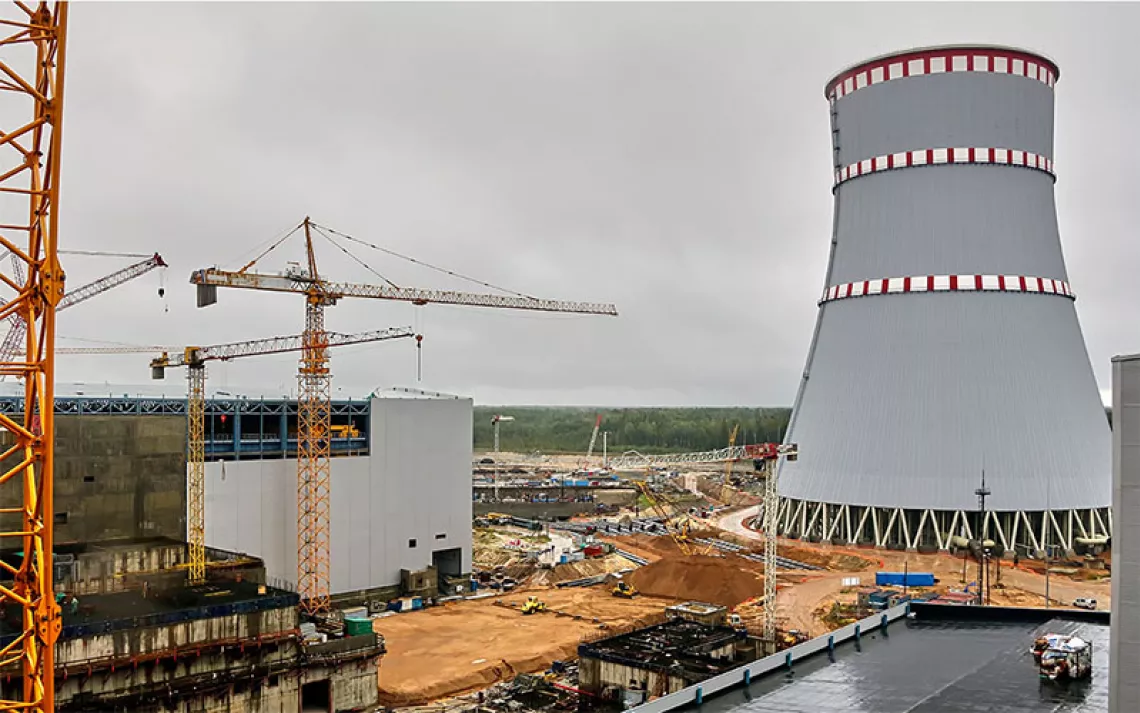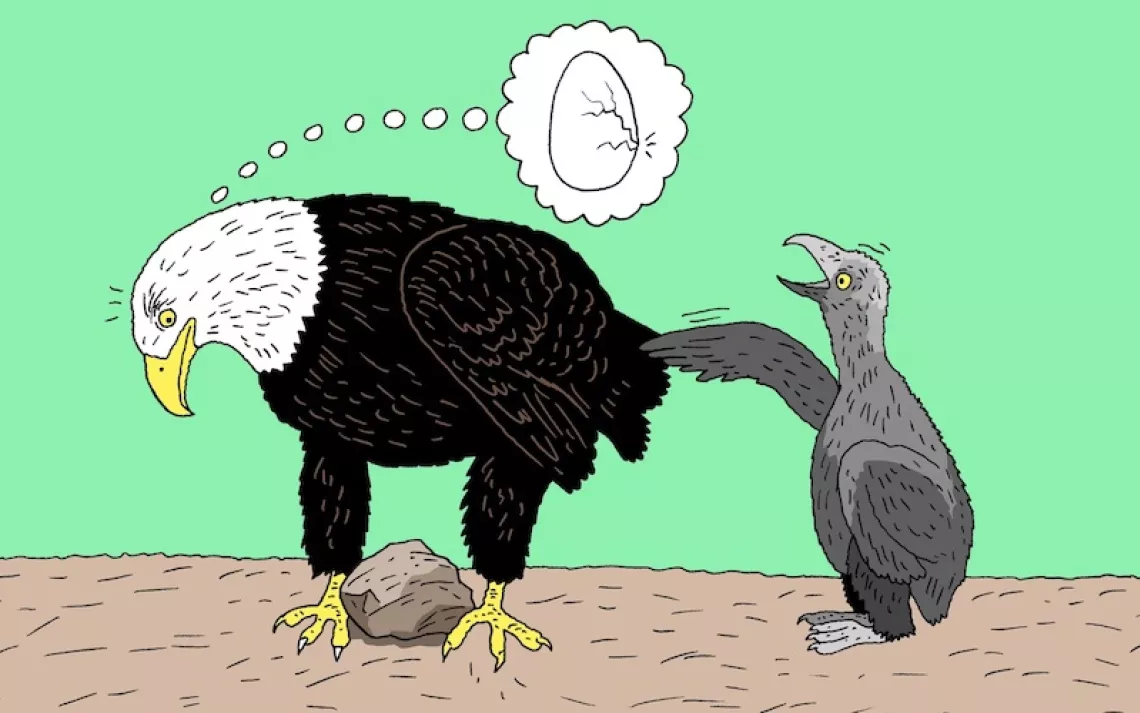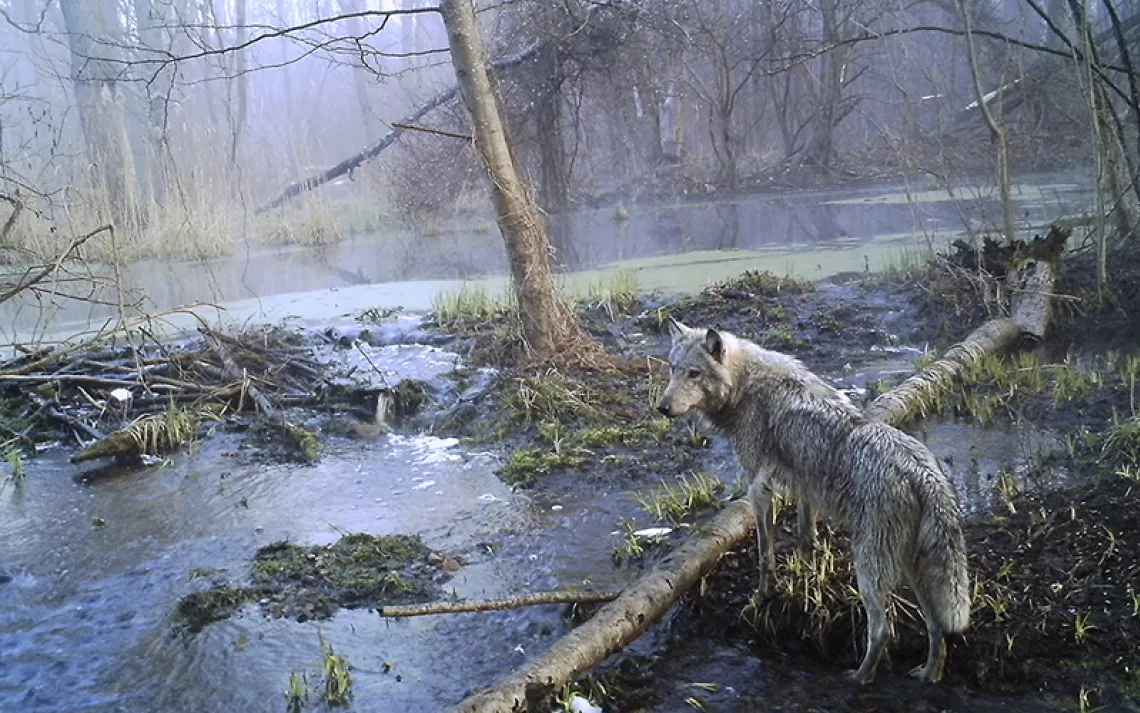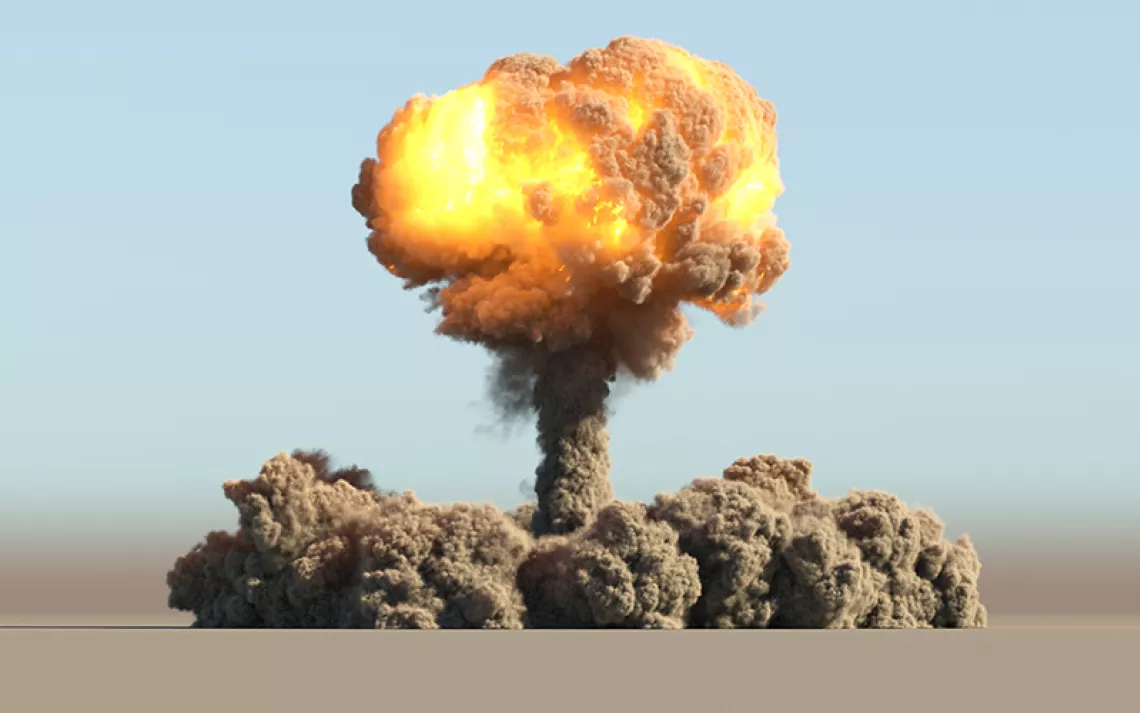National Parks, Nuclear Power, and the “Journey of Death”
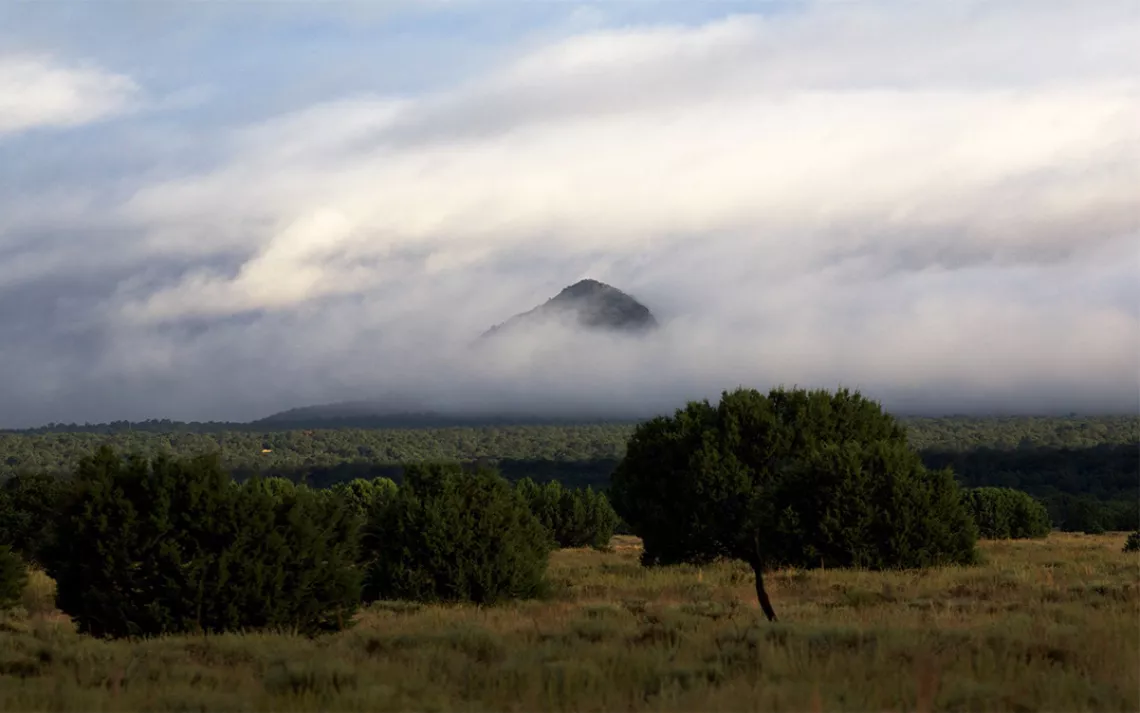
Photograph courtesy of Jeremy Miller
Last fall, I visited a charred, fractured landscape in western New Mexico known as El Malpais, a Spanish term meaning “the badlands.” On that cold, drizzly morning, fog ran like smoke into and around the narrow canyons and mushroom-shaped ramparts of sandstone. Atop these pedestals stood twisted slabs of rock resembling gargoyles and striding giants. The road climbed steadily. Suddenly, the low clouds relented, revealing a supreme vista—black lava flow extending for miles into the distance like a sea of charcoal. The land seemed imbued with a power, as if the stone were capable of generating these shapes of its own volition.
The landscapes here, an hour and a half west of Albuquerque, are recent in geological terms—created over 15 million years in a period of volcanic upheaval. El Malpais was designated a national monument in 1987. It also has the lesser-known distinction of being one of eight sites shortlisted by Major Leslie Groves, head of the Manhattan Project, for the Trinity Nuclear Tests of 1945.
According to historical accounts, Groves was looking for a test location roughly 400 square miles in size. The physical requirements necessary to test a nuclear weapon—remoteness, long sightlines, and vast and unbroken tracts of land, for example—are also typical features of what are today protected national parks and monuments. In addition, Groves requested that the test sites contain “no Indians,” reportedly so he could avoid a squabble with then Secretary of the Interior Harold Ickes.
The blasts were eventually carried out a few hours south of El Malpais, in a vast and unforgiving desert valley known as the Jornada del Muerto (“Journey of Death”) just north of today’s White Sands National Monument. Immediately after the blast, lead physicist Robert Oppenheimer is said to have quoted the Bhagavad Gita: “Now I am become Death, the destroyer of worlds.” Robert Serber, a Los Alamos physicist and eyewitness, gave a more clinical account: “I saw first a yellow glow, which grew almost instantly into an overwhelming white flash so intense that I was completely blinded. There was a definite sensation of heat. . . The first thing I succeeded in seeing after being blinded by the flash looked like a dark violet column several thousand feet high.”
The U.S. Army considered eight locations for the Trinity tests, six of which are now part of the national park system. These included, aside from El Malpais and White Sands, a location on the western fringes of the northern Sangre de Cristo Mountains in what is today Great Sand Dunes National Park (at the time a national monument). Another proposed site was San Nicolas Island, the southernmost island in the archipelago comprising today’s Channel Islands National Park, and a windswept spit off the southern coast of Texas, in today's Padre Island National Seashore. Finally, there was the Desert Training Center—the largest military training ground in history, sprawling across 18,000 square miles of California, Nevada, and Arizona—part of Mojave Trails National Monument, one of three new monuments designated in February by President Barack Obama.
*
The explosive power of the first atom bombs derived from the splitting, or fission, of a uranium atom. This, in turn, triggered a runaway nuclear chain reaction capable of shattering buildings and vaporizing civilians within a one-square-mile blast radius President Harry S. Truman never wavered about his decision to unleash this terrible power on Japan, claiming it saved thousands of lives on both sides of the conflict. Whether or not Truman’s moral calculus was sound is the subject of fierce debate. What is certain, however, is that only a country firmly assured of the exceptional nature of its power would use such a weapon on another.
Many trace the idea of American exceptionalism to the French historian Alexis de Tocqueville who, in the first chapter of his sprawling two-volume treatise, Democracy in America, writes, “[T]he position of the Americans is . . . quite exceptional, and it may be believed that no democratic people will ever be placed in a similar one.” By exceptional, Tocqueville clearly does not mean extraordinary, as many use the term today, but simply “different.” Since then, however, the notion of American exceptionalism has taken on historical and philosophical baggage. Today it is tinged with religious and moral certitude, stitching together John O’Sullivan’s “manifest destiny” and Ronald Reagan’s “shining city on a hill”—both unabashed in their advocacy of American ideas and power domestically and abroad, more often than not with violent consequences.
The power at work in our parks is subtler but no less potent. Erosion, glaciation, volcanism, and plate tectonics are key processes that created—and continue to create—the West’s iconic landscapes. These phenomena typically play out over millennia and are therefore difficult for us, short-lived as we are, to fathom. We can measure the flow of a river, but we can merely infer its canyon-cutting potential. We can calculate the mass and velocity of a glacier but only guess at how, given enough centuries, it will alter the landscapes downhill. With the proper tools and perspective, we can begin to make sense of geological devastation. But the sense we make is always abstract. These are acts of imagination as much as they are the intellect.
When visitors look into the depths of the Grand Canyon or upon the stark vertical face of El Capitan, they often describe having their breath taken away or being rattled to the core. These are common responses to scenes of devastation. What is Crater Lake if not an aquamarine wound reminding us of the sudden volcanic destruction of an entire mountain? Or the vast lava flows and cinder cones of El Malpais? Devastation, however, is merely the aftereffect of power.
When scientists speak of the explosive force of a nuclear device, they use the term kilotons (a one kiloton bomb has the explosive power of one thousand tons of TNT). We can also use blunter metrics to describe the power unleashed in August 1945, as journalist John Hersey did in describing the horrors inflicted on the human inhabitants of Hiroshima: “More than four square miles of the city were instantly and completely devastated. 66,000 people were killed and 69,000 injured.” Then, three days later, on Nagasaki: “[A]t 11:02 A.M., another B-29 dropped the second bomb on the industrial section of the city of Nagasaki, totally destroying 1½ square miles of the city, killing 39,000 persons and injuring 25,000 more.”
Sometimes nature’s power manifests with the force of a nuclear blast, as in 1980 when Mt. St. Helens erupted, throwing ash and debris over a 230-square-mile blast zone. Hundreds were displaced and 57 killed, most from asphyxiation. The Observer Reporter noted that the force of the eruption was equivalent to a nuclear bomb in the “10-megaton to 50-megaton range,” roughly 2,500 times more powerful than the atom bombs dropped on Hiroshima and Nagasaki.
*
Among the blackened seas and stone giants of El Malpais, I stopped the car and retrieved my camera. As I stepped out onto the muddy shoulder, I noticed several shards of red pottery covered in zigzag patterns at my feet. Unearthed by rain, the fragments were of a style known as White Mountain red ware—traces of the Ancestral Puebloans, or Anasazi, who inhabited the canyons and plateaus for thousands of years before abandoning them suddenly, most likely in response to extended drought roughly seven centuries ago.
As we mark the anniversaries of the bombing of Hiroshima and Nagaski (August 6 and August 9, respectively), and the National Park Service centennial (August 25), it’s worth noting how some of our most protected parks and monuments track two seemingly separate channels of U.S. history: the deep, violent geological history of its terrain and its headlong, explosive rush into the nuclear age. Just as our nuclear program is a projection of our unchallenged global military dominance, our national parks project the power of the American landscape—both, we have to believe, projections of our national identity. As American as apple pie or a ’57 Chevy, our nuclear weapons and national park system are different endpoints of a common mode of thinking. They are the light and dark, the yin and yang, of American exceptionalism.
 The Magazine of The Sierra Club
The Magazine of The Sierra Club
